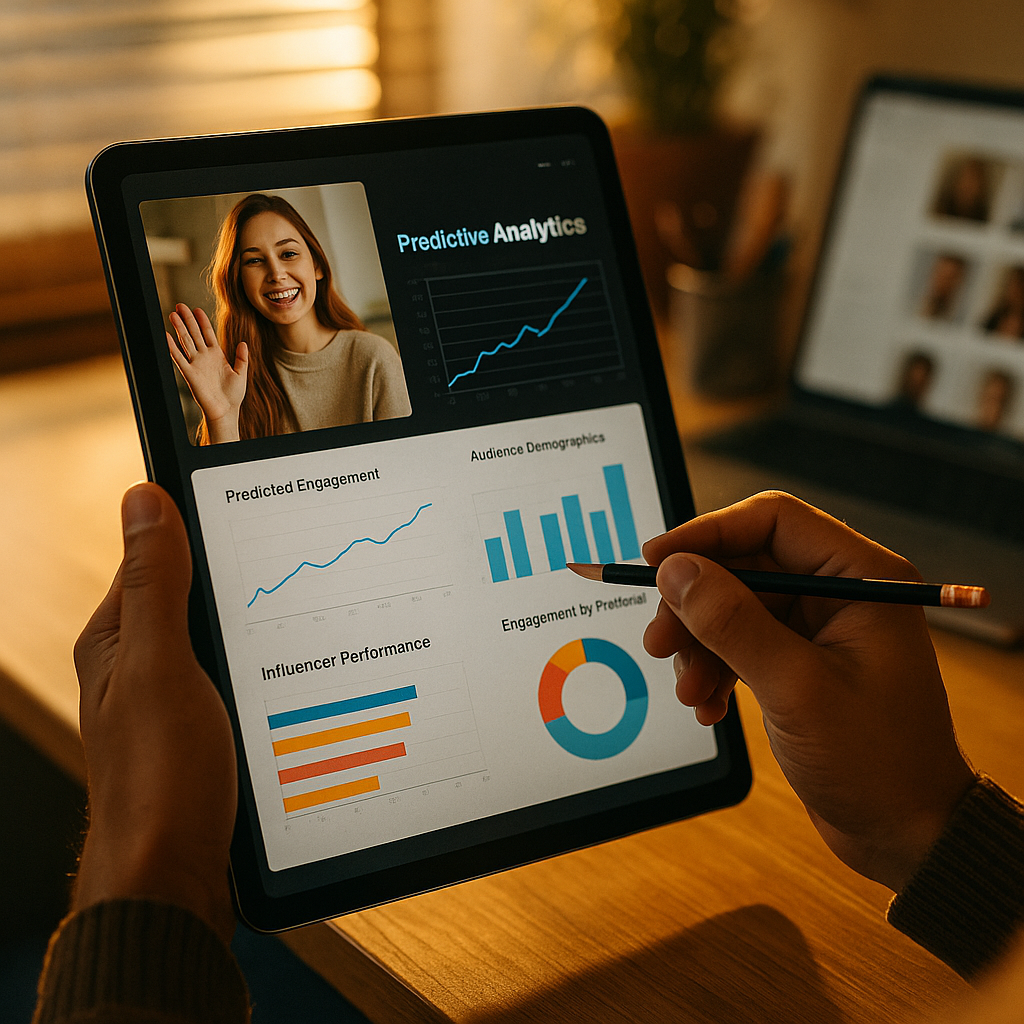Predictive analytics in influencer marketing is reshaping how brands connect with audiences and measure ROI. By using advanced data models to forecast trends and campaign results, marketers unlock smarter, more impactful partnerships. Dive into this guide to see how predictive analytics can drive your influencer marketing strategies and position you ahead of the competition.
Understanding Predictive Analytics for Influencer Campaigns
Predictive analytics refers to the use of data, statistical algorithms, and machine learning to anticipate future outcomes based on historical data. In influencer marketing, these insights empower brands to forecast campaign success, audience engagement, and even sales conversion rates. This data-driven approach shifts marketing from guesswork to evidence-based decision-making, ensuring campaigns reach the right eyes at the right time. By interpreting signals from past campaigns, predictive models offer clarity on which influencers are most likely to deliver strong results and which content formats will resonate best with specific target demographics.
Optimizing Influencer Discovery Through Data Prediction
One of the main challenges in influencer marketing is identifying partners whose audiences genuinely align with brand goals. With predictive analytics, brands can analyze creators’ past content performance, audience engagement spikes, sentiment analysis, and growth trajectories. Instead of relying solely on follower counts or superficial metrics, marketers can use algorithms to assess:
- Audience authenticity and potential for brand fit
- Future engagement rates based on historical data
- Likelihood of influencer’s audience generating sales or conversions
This form of influencer discovery not only raises campaign ROI, but also minimizes wasted budget and effort—a key differentiator as influencer spend grows in 2025.
Enhancing Content Strategy with Predictive Insights
Predictive analytics doesn’t stop at selecting the right influencers. It also informs what type of content will be most effective. By studying metrics such as watch time, click-through rates, and social sentiment, predictive models highlight:
- Optimal posting times for maximum audience engagement
- Preferred content formats, such as short-form video vs. long-form stories
- Thematic and stylistic elements likely to go viral
Such insights enable brands and influencers to co-create content that not only aligns with campaign objectives but also appeals authentically to target communities. This approach ensures efficiency, as teams can prioritize high-impact creative ideas from the outset.
Forecasting Campaign ROI and Conversions
In 2025, marketers are pressured more than ever to prove the impact of every dollar spent on influencer marketing. Predictive analytics addresses this by accurately forecasting campaign outcomes. Sophisticated models ingest data from audience demographics, influencer performance history, cross-channel traffic, and seasonal trends to predict:
- Expected conversions or sales uplift from a specific campaign
- Projected cost per acquisition (CPA) before launching
- Which influencers are likely to boost brand loyalty and repeat purchase rates
This precision enables budget optimization and realistic goal-setting. Predictive tools can even run scenario analyses, allowing teams to compare the potential impact of different influencer combinations or content strategies before spending a cent.
Minimizing Risk and Boosting Brand Safety
Brand reputation is paramount. Misaligned influencer partnerships can expose brands to PR risks, low-quality engagement, or even fraud. Predictive analytics mitigates these threats by:
- Identifying red flags in influencer behavior—such as sudden engagement spikes or controversial content
- Predicting the likelihood of negative PR associations based on historic data
- Enabling brands to avoid influencers statistically linked to bots or engagement-pod activity
This proactive risk management not only protects brand safety, but also ensures long-term campaign sustainability. As AI techniques become more refined in 2025, automated anomaly detection further minimizes exposure to fraudulent activity, preserving trust between brands and influencer audiences.
Improving Influencer Relationship Management with Predictive Modeling
Brands succeed not only by identifying the right influencers, but also by managing long-term relationships. Predictive analytics helps marketers:
- Anticipate which influencers are most likely to remain loyal partners
- Identify opportunities for long-term collaboration based on mutual brand affinity and historical co-performance
- Spot trends in influencer lifecycle, signaling when to refresh or adjust partnerships
This data-driven approach to relationship management ensures partnerships remain mutually beneficial, timely, and authentic—further enhancing campaign outcomes while saving time and resources.
Conclusion: Harnessing Predictive Analytics for Sustainable Influencer Marketing Success
Predictive analytics is the future of influencer marketing, enabling brands to make smarter, data-backed decisions at every stage. By leveraging advanced models and insights, marketers reduce risk, optimize spend, and drive stronger returns. For sustainable success in 2025, brands must embrace predictive analytics as a core pillar of their influencer marketing strategy.
FAQs About Predictive Analytics in Influencer Marketing
- How does predictive analytics improve influencer campaign ROI?
Predictive analytics enables marketers to forecast campaign outcomes and optimize influencer selection. This ensures marketing budgets are spent on partnerships that offer proven engagement and sales potential, driving higher campaign ROI. - What data inputs do predictive models use for influencer marketing?
Predictive models often incorporate influencer engagement history, audience demographics, content type, sales attribution, social sentiment, seasonal factors, and industry benchmarks to forecast campaign success and identify risks. - Can predictive analytics help detect influencer fraud?
Yes. Predictive analytics pinpoints suspicious patterns like abrupt follower growth or abnormal engagement rates. By analyzing historic red flags, brands can proactively avoid fraudulent or inauthentic influencers and safeguard investments. - Is predictive analytics only for large brands?
No. Advances in AI and machine learning have made predictive analytics more accessible, allowing small and midsize brands to benefit. Many influencer marketing platforms now offer predictive tools suited to various budget levels. - How do I get started with predictive analytics for influencer marketing?
Begin by collecting high-quality campaign data, then select an influencer platform or analytics tool that integrates predictive modeling. Start with clear campaign objectives and use predictive insights to guide influencer selection, content strategy, and budget allocation.
